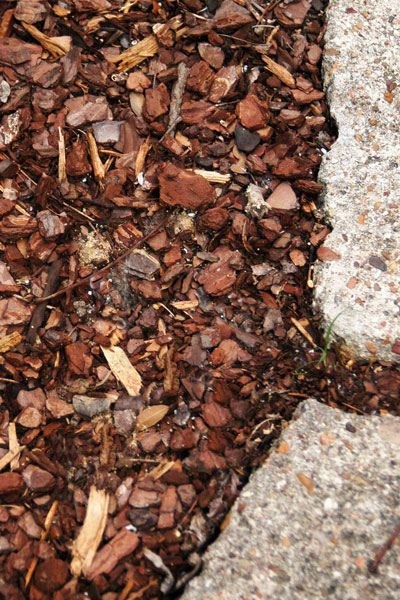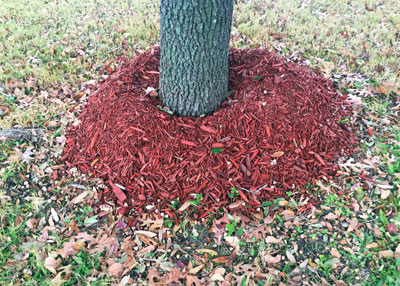Question of the Week: December 21, 2017
“Neil, how critical is mulching for my plants in the winter?”

Mulches, as stated, are always a good plan. They do so much to improve life for our plants. But specifically in winter, how important are mulches here in the Lone State State?
To answer that, let me list the reasons we use mulch and then address them specifically as they apply to the winter.
• Slow growth of weeds. Yes, weeds do grow in the winter. Cool-season weeds can be unsightly. Chief among them in beds: annual bluegrass, clover, chickweed. Mulches stop germination of these weeds’ seeds, slow growth of the plants, but only if they’re applied a couple of inches deep.
• Moderate rate of change of soil temperatures (the freeze/thaw cycles). Aha. This is a big one in winter. If you have plants that are vulnerable to cold injury in your area, especially types that die to the ground and must return from their roots, mulching can help ensure that the roots will survive to come back for another year. Here you’ll want to apply 2 to 3 inches of a fairly loose mulch such as bark or shredded tree leaves. But you probably won’t have to cover your plants completely (as, for example, strawberries in the North).

Photo: I have no explanation for this “mulch volcano.” It serves no function, yet you see them in place around hundreds of trees. It actually holds moisture against the tree’s trunk while it prevents moisture and nutrients from soaking into the soil where the roots are. The mulch floats away in heavy rains and it doesn’t look natural. If you saw me hop out of the passenger side of a car and snap this quick photo two days ago, now you know why. The crew had done this to probably 25 trees. Go figure.
• Slow the drying process by limiting soil-to-air contact. Even in winter our Texas soils dry out. And watering can be challenging when it’s cold. Mulches can lighten that need.
• Lessen erosion by slowing flow of runoff. In this case you’ll need a fairly heavyweight mulch. A small size of river rock can be decorative and functional. I use bark mulch in our landscape, and I have to confess that I have to replace it following heavy rains. I can rake and retrieve some of it, but some always gets hung up in the groundcovers. In my areas of heavier wash, I go with the river rock.
• Reduce splashing of rainfall and irrigation, thereby lessening staining of the side of the house, splattering of water-borne funguses. This is really critical if you have a light-colored house and red, iron-rich soil. It’s also critical if you’re growing plants like pansies or snapdragons that are susceptible to soil-borne water-mold funguses that splash up onto leaves and stems when it rains. Mulches help.
• Improve looks of the landscape. Forget all the rest. This is why many of us put mulches out in our gardens. They just look good. After all, that’s a big part of why we landscape in the first place.
